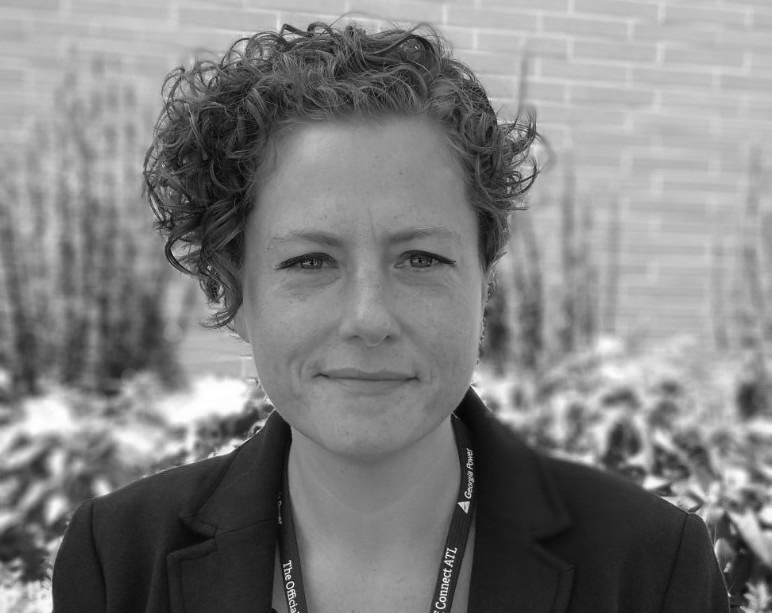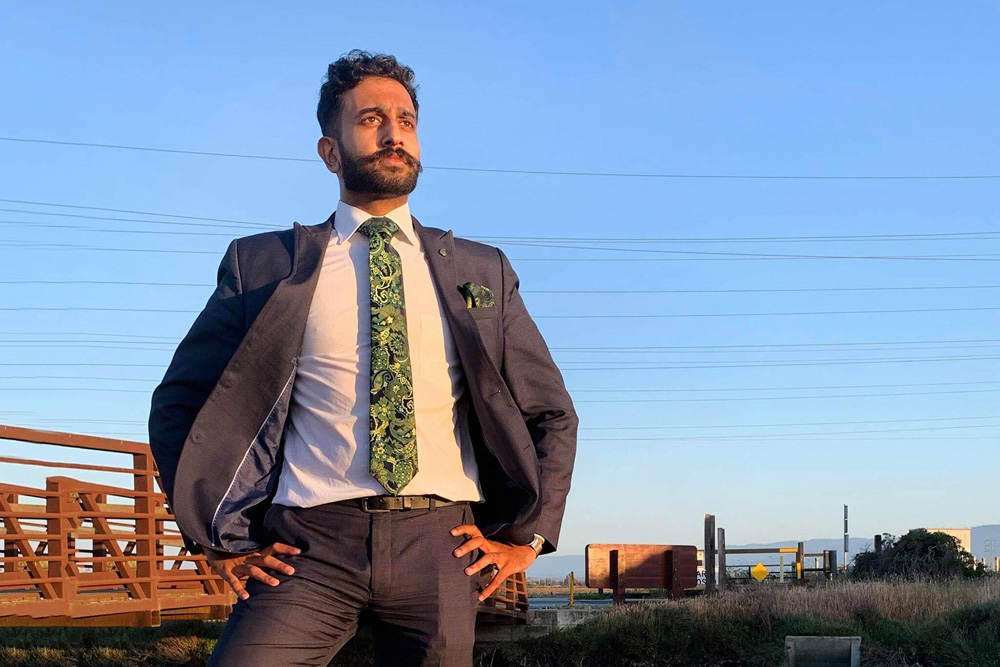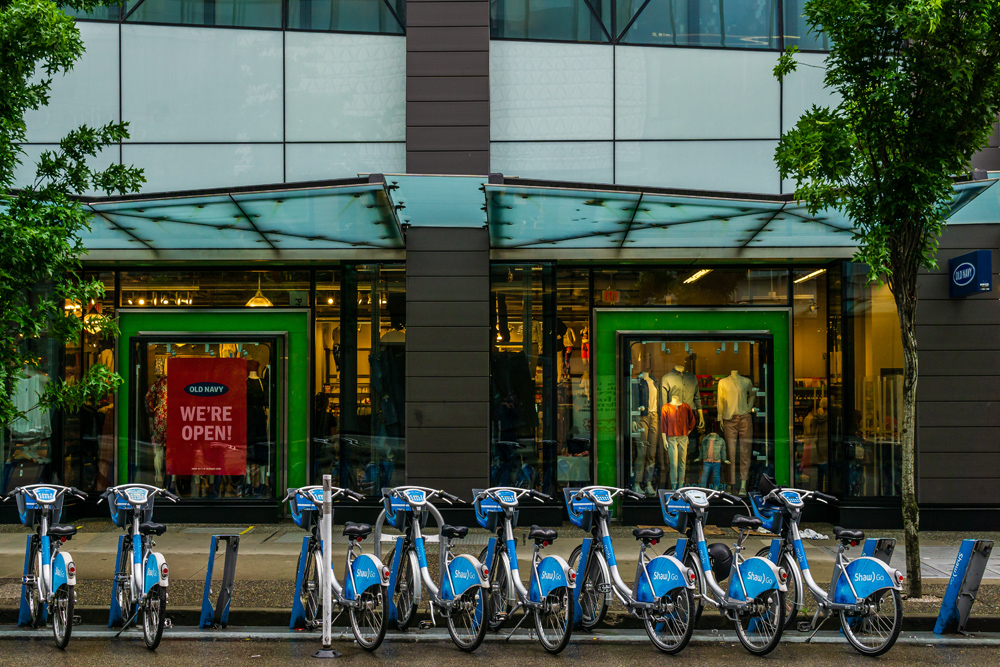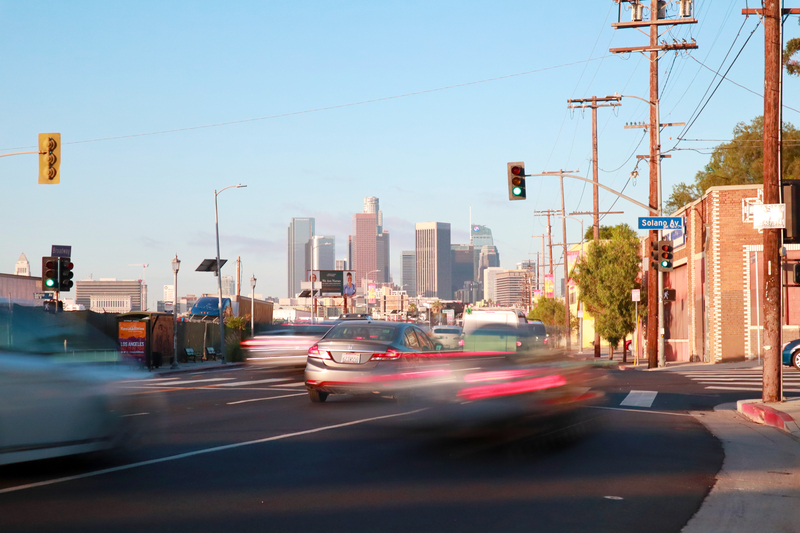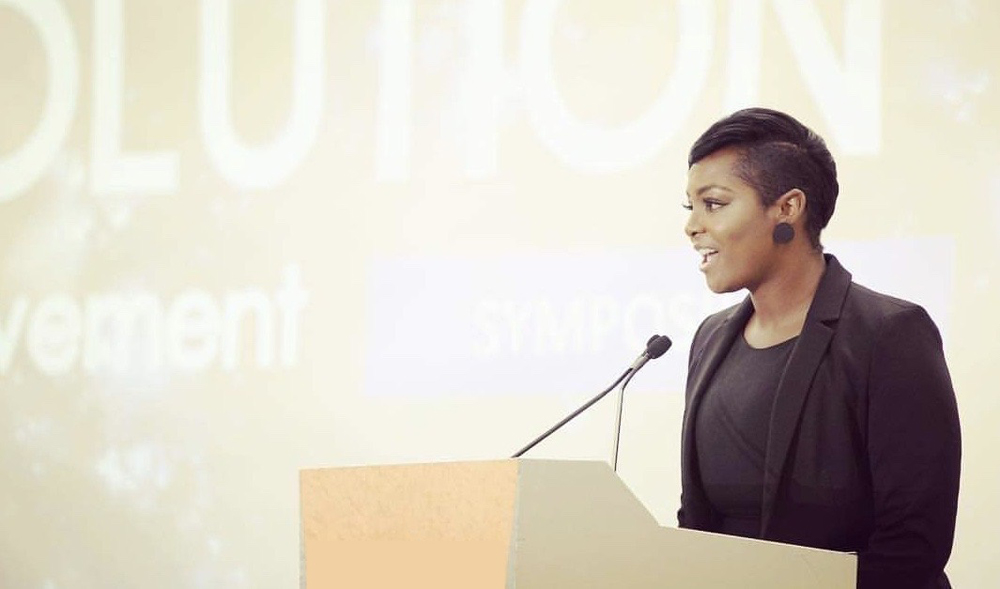
Many urban planners, when talking about inequality of access to transportation services in the US, will talk about demographics and economics. Dr Destiny Thomas, CEO of Thrivance Group, cuts through to a different, fundamental explanation: slavery.
“That’s such a loaded question,” she says, before going on to talk about the “history and legacy” of transit: “Originally trains were about the literal movement of Black bodies as cargo…built by the hands of enslaved Black and Indigenous people.”
She goes on: “Even later as we saw the introduction of the highway network, then transit via buses and trains, became a way to relegate certain so-called ‘undesirable’ people to certain communities based on the colour of their skin or, more recently, how much money they have.”
Thomas traces her own “hypersensitivity to the ways decisions about land use were being made” to her experience of a no-knock police raid after her 600-unit apartment block was sold for development.
Racist ideology
Losing two friends to car crashes, the murder of her childhood boyfriend at a bus stop, and the shootings by police of Oscar Grant at a BART station in Oakland in 2009 and 12-year-old Tamir Rice in 2014 “really cemented my desire to insert myself into the planning space”. But it was not until she was working at California Department of Transportation, engaging Indigenous communities across the state, that she learned to call what she was doing ‘planning’. “The elders in Indigenous communities really informed me about the intentionality and capital interest tied to the work,” she recalls.
The interview with ITS International was conducted in July in two ways: face-to-face via Zoom from Los Angeles and subsequently by email, and this account of it uses comments from both.
Expanding on her first point, Thomas writes: “The history of transit (trains and then later buses) is directly tied to the valuing or devaluing of land, depending on who lived there and the transport of Black (and later poor) bodies solely for the purposes of exploiting their labour. Transit evolved to become not just a mechanism of racism but also a site for racist ideology. Even when segregation ended, transit became about relegating the so-called undesirable among us to certain communities/spaces. What we have today, after many years of trying to change course and develop transit systems and networks that meet a broader set of needs, is a competition for space between community and commuters.”
Current transit networks and systems prioritise the travel needs of commuters, Thomas insists. “Just as in other aspects of society and the built environment, the more money you make, the more prevalent your values and priorities will be in network design and access.”
This means that “what we’re doing is really looking at space in a way that pits communities against commuters, which are never the same groups of people”, she argues. “Although we like to present our shiny projects in a way that suggests that those are the same people, they are not.”
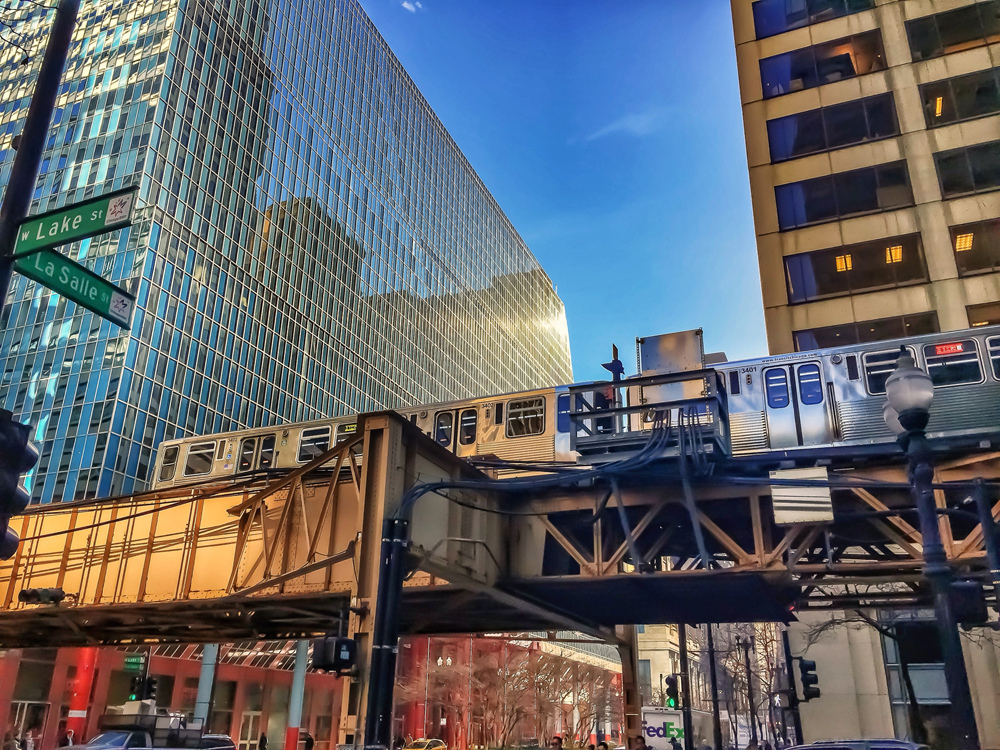
If commuter routes take precedence over neighbourhood networks and connections, it is likely that many people may need multiple modes and will experience inflated travel times to reach their own leisure pursuits and places of employment. If you have to make “three and four connections to get to an hourly-wage job, it can be a very stressful experience,” Thomas says. “I remember going through that when I first moved to LA.”
Equitable access
She co-founded Thrivance Group in 2011 and it has developed into an organisation dedicated to “equitable access to safe neighbourhoods, beautiful spaces, social enterprise, healthy food options, quality healthcare, affordable housing, active transportation and clean air and water”.
Thomas explains that it grew out of Thrivance Project, “my personal research that involved creating frameworks for motivational interviewing and helping people resolve trauma they’d experienced in the built environment”.
On that point, prioritisation of commuter transit “makes a very clear statement about who our desired ridership is: people who are going to work, to generate income to contribute to the economy”.
But she adds: “The people who actually need access to quality of life and to jobs are Black and brown folks who tend to live in lower-income communities, and have very little options for connectivity through their neighbourhood.”
On top of all of this, Thomas writes: “Transit infrastructure is hostile toward people with disabilities and unhoused people and enforcement efforts appear to be working solely in the interest of criminalising people who don’t fit into the target ridership demographic.”
She believes that ‘infrastructural racism’ is, as the term suggests, therefore hard-wired into the decision-making process. Using those words “is meant to invoke a call to action”, she writes: “I want people to hear the term and begin to question and challenge the ways structural (or systemic) racism have been built into our design processes, the ways we’ve come to understand land use, and who we have marginalised through our infrastructure investment priorities.”
In short, she says: “We have literally built racism and racist ideologies - and later classist ideologies - into the built environments.” This is intentional, she believes. “We’ve created these conditions in our transit stations, and on transit, that only work for able-bodied people who have high-paying jobs.”
There is no single problem which can therefore be ‘solved’. She is concerned about the way, for instance, that Black people with mental illness are ‘hyper-criminalised’ in transit environments, and those with physical disabilities are marginalised from transport services. “That inaccessibility limits job prospects, erodes access to medical care, stifles kinship connections, and erases people from the public realm entirely - making it that much more difficult for even the most well-meaning planners to remember people with disabilities in the built environment,” she emails.
Essential workers
The Covid-19 pandemic has caused her to think about this “more intentionally”. “I don’t think there is one problem but I do think there’s a way we can rank them, or prioritise them, and tackle them that way,” she explains. “And I think really what we ought to be doing right now in this moment, and moving forward, is looking at what ridership has evolved into in this time.”
During the first intense lockdown phase of coronavirus, the people using US public transit tended to be essential workers, with no other options. There was even talk of ‘white flight’ from public transportation at that time. “No one’s making some political statement right now to be on a bus,” says Thomas. “And so we need to invite them into a long-range planning process that helps us meet their specific needs.”
Accessibility for people using wheelchairs or walkers, kerb ramps around stations and the physical space within buses and carriages, is another major issue. “It’s not enough to just have benches that fold up and an open space,” she says. “We need to be more deliberate in the space design so that people who are living with disabilities have an equitable amount of comfort and convenience as people who aren’t. The gamble, the lottery that you have to participate in to just know where there will be working elevators or escalators is completely unreasonable. The truth of the matter is we’ve done such an injustice and a disservice to people with physical mobility challenges that I would like to see us start there - that these spaces in buses and trains, and the route to them, need to be more accessible.”
During Covid-19, many city authorities, in the US and worldwide, have reallocated space for pedestrians, cyclists and street dining – so-called ‘slow streets’. While open to the idea, Thomas has major reservations.
“Being imaginative about new ways to use and share space is a welcome and exciting prospect,” she writes. “[But] I think the term ‘equity’ has devolved into a fluid term that can be used to advance goals and outcomes with intentions that have nothing to do with equity. I see a need, in this moment especially, for streets reserved and temporarily transformed to serve the specific needs of people who are most vulnerable to the crises of racism and pandemic.”
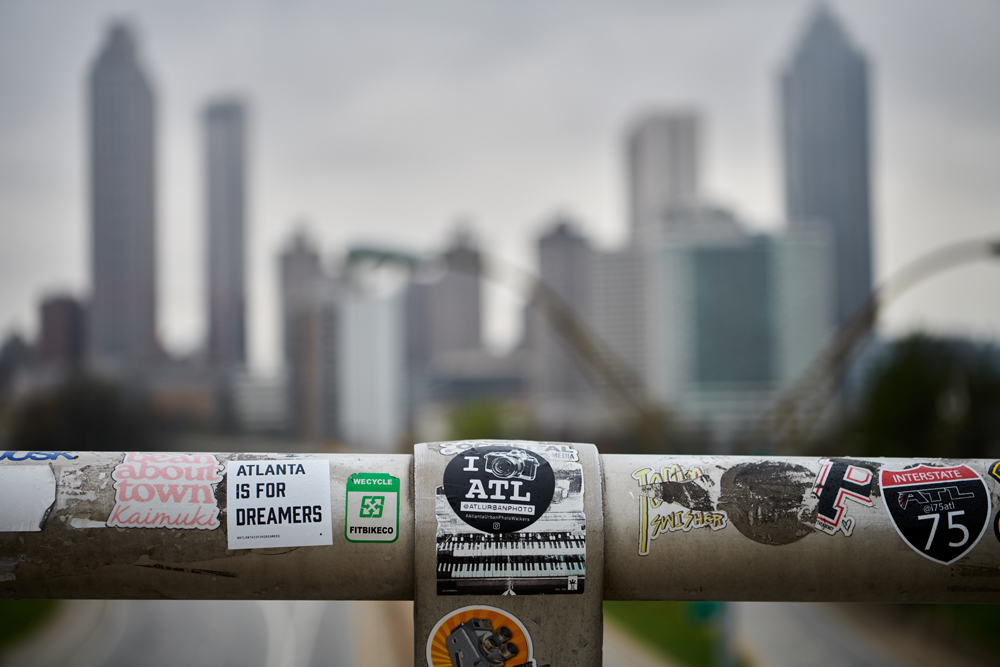
In essence, slow streets don’t work for two reasons, she says in the Zoom interview with ITS International. “One of them is rooted in policy and procedure. The other reason has a lot to do with the actual built environment.”
The instant reallocation of space through ‘slow streets’ initiatives means that cities “showed us that it doesn’t take all this method and standards and regulations to implement just one person’s idea; it depends on who you are and where the idea comes from. That is how we determined whether or not we’ll listen.” So in fact the excuse that bureaucracy moves slowly is unfounded: “They’ve been telling us they couldn’t do things overnight for so long. So now, not only do cities and municipal agencies have the capacity to honour the will and ideas and priorities of small groups of people at a time, but they can do it overnight to things that we thought they couldn’t do. They did it.”
Erasure legacy
There is something innately disturbing here, Thomas insists. “What’s more troubling about that is it reinforces the legacy of erasure and devaluing the humanity of Black and brown voices in these spaces. It sets a precedent for how this work can be done so-called ‘efficiently’.”
She recalls being dubbed ‘alarmist’ for voicing concerns that infrastructure changes during the pandemic would become permanent rather than experiments.
“And everyone was like, ‘you’re an alarmist, you’re crazy, why would the city do that’, and not even a week after these pilots went into place, we started to see cities like Seattle and Oakland saying: ‘We think we’ll make these permanent.’ So they’ve completely subverted a community engagement and long-range planning process for infrastructure that would otherwise have zero political will.”
Therefore not only is there a problem with inequality but also one of bypassing planning due process. “There are inequities in how we define due process and community engagement,” Thomas goes on. “I’m aware of how certain community engagement processes just result in the people with the most time and the most money showing up to the meetings and having their interests honoured. So I’m not talking about public hearings and comment sessions, I’m talking about deep-seated, rooted relationships in the community that exist prior to the inception of the project, and genuine and authentic ongoing communication that isn’t initiated with the outcome in mind. From an infrastructural standpoint, it is absolutely nonsensical to encourage people to invest in temporary or quick-build infrastructure in a space that has long-standing infrastructural inequities: examples of that are the eroding sidewalks and missing kerb ramps or pavement quality that would be atrocious to any cycling advocate.”
Also, slow streets don’t exist in an infrastructure vacuum. “The spaces beyond also pose a danger and there hasn’t been enough outreach to communicate to residents how to maintain connectivity and freedom of movement beyond the spaces that we are designating as closed or open streets,” Thomas says.
So a teenager on a bike might reasonably expect to be safe on a slow street – but they may be less aware of the busy road or priority corridor that intersects with it.
Repairing infrastructure
“Then are we really creating safer spaces, all these things considered?” she asks. “And also, if we have a spare $1 million, $2 million, $3 million to implement road closures on 70 miles’ worth of streets, why isn’t that money being used to repair the actual infrastructure?”
Despite what seems like a bleak picture, Thomas is optimistic. “I’m encouraged,” she says. “The egregiousness of what has happened with these planning processes has been a blessing in that it reveals to us what is possible if we were to try to do things the right way.”
She cites the example of Atlanta, which deliberately held back on slow streets while other cities went ahead. “They released a statement saying ‘this sounds great on its face, but we haven’t done the work of assessing whether or not this will have equitable benefits for people who are actually disproportionately dying from Covid-19. So we’re going to hold off on implementing this until we’ve done that analysis, and we’re going to include community in that process’.”
Thomas thinks that there is the seed of something potentially significant here: slow streets could become ‘school streets’ since schools are unlikely to be able to open up in the ways they have before. “I hope to see things like ‘outdoor classrooms’ that enable collective/remote learning on a block-by-block basis, open-air clinics serving people beyond Covid-19 testing, safe routes for mutual aid, and al fresco dining in residential areas in communities with limited access to healthy food. And so if we can take what is a good idea and evolve that idea to be more inclusive for people who actually need space, we can go somewhere with this,” she says. “I’m not anti-repurposing or reclaiming space. But I am pro-centring the needs of people who have been erased and ignored through these crises that we’re experiencing.”
‘Room for everyone’
Thomas is not looking for ‘allies’ in this. “One of the biggest points of pushback or tension that we experienced in these proposals is people saying: ‘You know, we don’t have time to all learn about racism and all this stuff right now and if we start this process, then it’ll be 10 years from now before we see any change’,” she says. “That’s a falsehood: there are people like [urbanist collective] BlackSpace, who have already been doing this work and are ready to go on day one. So it’s less about us needing allies; an engineer doesn’t need to convince me of engineering principles in order for me to trust their insight.” Therefore people who are new to ideas such as the importance of race in transportation and planning can listen to “people who do know what to do and who have done this work and been researching it for a long time”.
Thrivance’s own digital teach-in, The Un-Urbanist Assembly, was designed to encourage participation. “There’s room for everyone in this work,” Thomas insists. “And there’s room for every perspective in this work. I’m a firm believer that no idea is a bad idea: the more people you involve in its conception, the more feasible - and the more valuable - that idea becomes. So, I don’t want to be alone on this ‘slow streets pushback island’ - I would love for people to join us and to reimagine what these spaces can look like with the inclusion and participation of the communities that they’re in.”
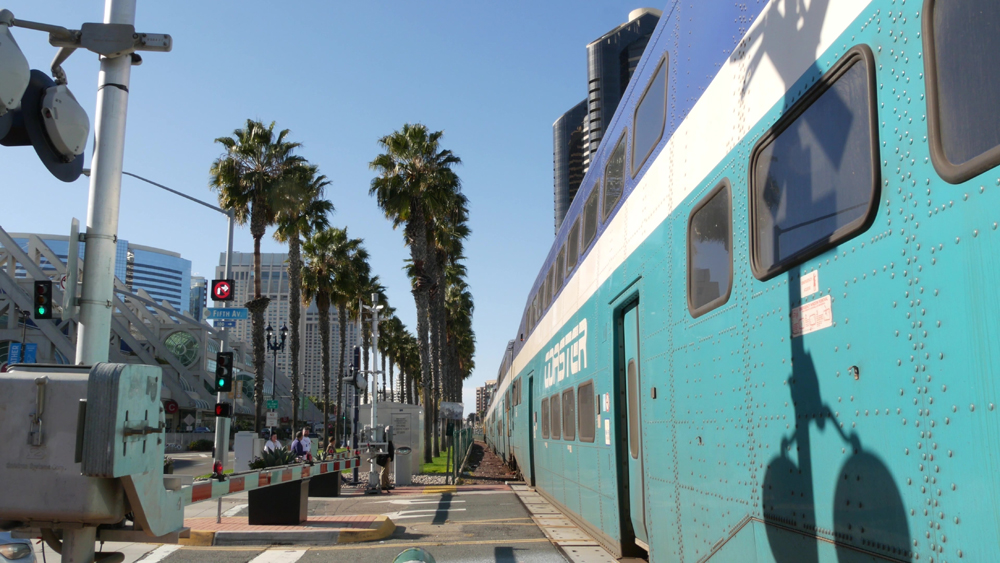
Asked about what companies involved in traffic management products – the readers of ITS International, in short – can do to be involved in the debate, she says: “I love this question because it’s goes back to what I was saying before, which is there’s room for everyone.”
Perhaps data analytics companies could explore and understand the ways their data may have some inequities or blind racial blind spots in it, she says. Some firms which produce mapping, data collection and analysis tools “are now working with me directly to reimagine or to recreate products that have more nuance”, she says.
She would also like to see more from micromobility companies. “For example, if you look at the map of where bike-share has been offered or expanded, they literally have remained or steered clear of South Central LA,” she suggests. “They’re not serving Black and brown folks at all in our communities, despite the fact that we’re their primary consumers, so we’re having to use four and five modes just to access them.”
Changing the world
There is a need to make fundamental changes about who planners focus on in their work. “I think our cities and government and municipal agencies need to completely abandon what they think is a competitive or fair bidding process, and make space for smaller businesses - and for people with new ideas and a legacy of anti-racist practice to be a part of those bidding cycles. Right now, we have the big name firms sort of eat up all of the opportunities, and very rarely are we invited to those spaces at a rate that values us equitably.”
She wants an ‘equity’ rating introduced “so that there is a system of accountability, where we’ve seen ongoing legacies of harm, either within the workforce itself, or with the implementation of projects”.
Results would be reported regularly through a transparent platform. “We have major planning firms who are both planning transit network enhancements while also being the primary contractor for a brand new prison in that same neighbourhood,” she concludes. “Can’t do that. Can’t do it.”
A final question. Did Thomas’ first school report card really say ‘asks too many questions’? She writes back: “My first report card said I asked too many questions…but it also said I seemed like someone who’d grow up to change the world :)”



